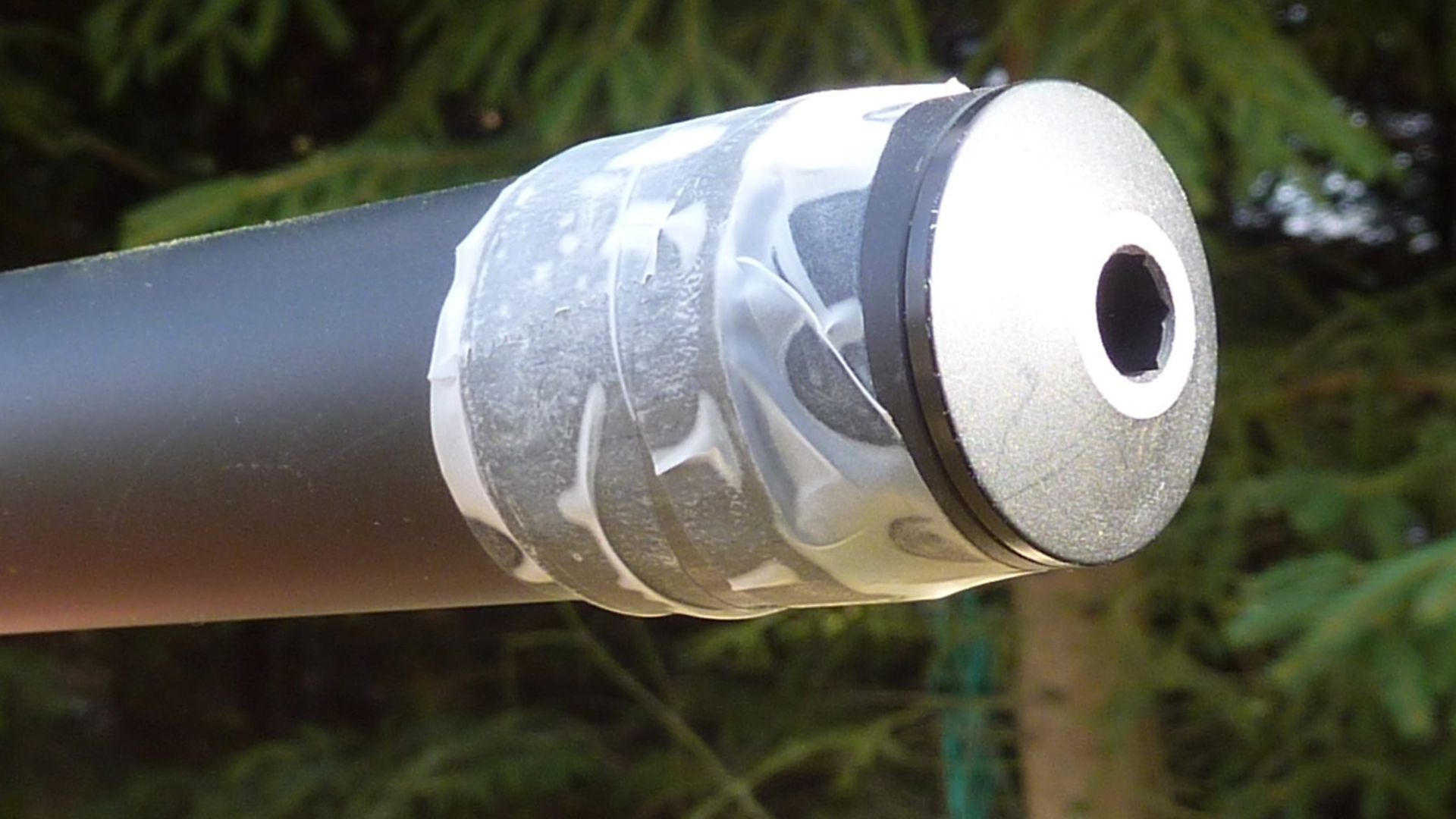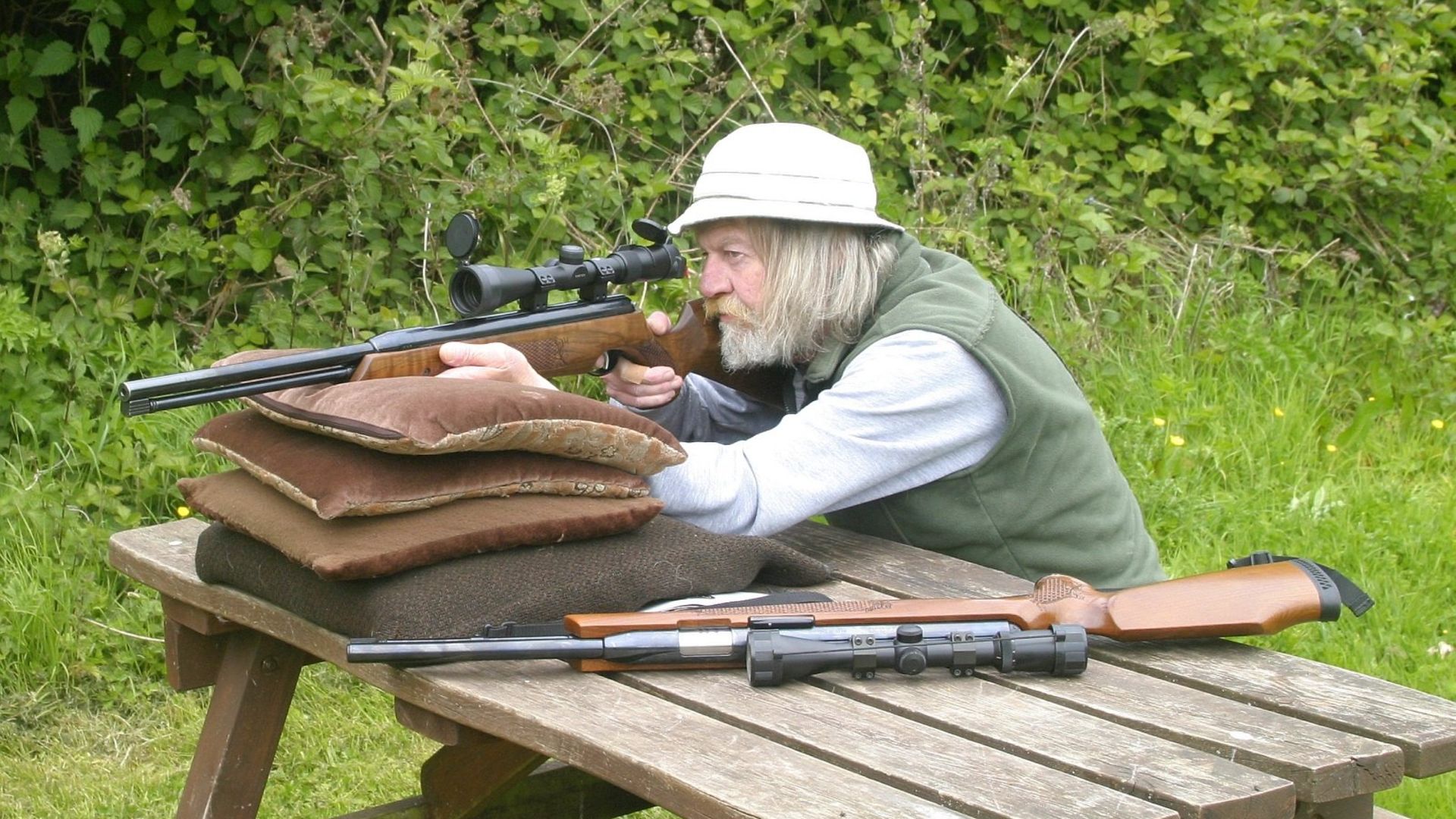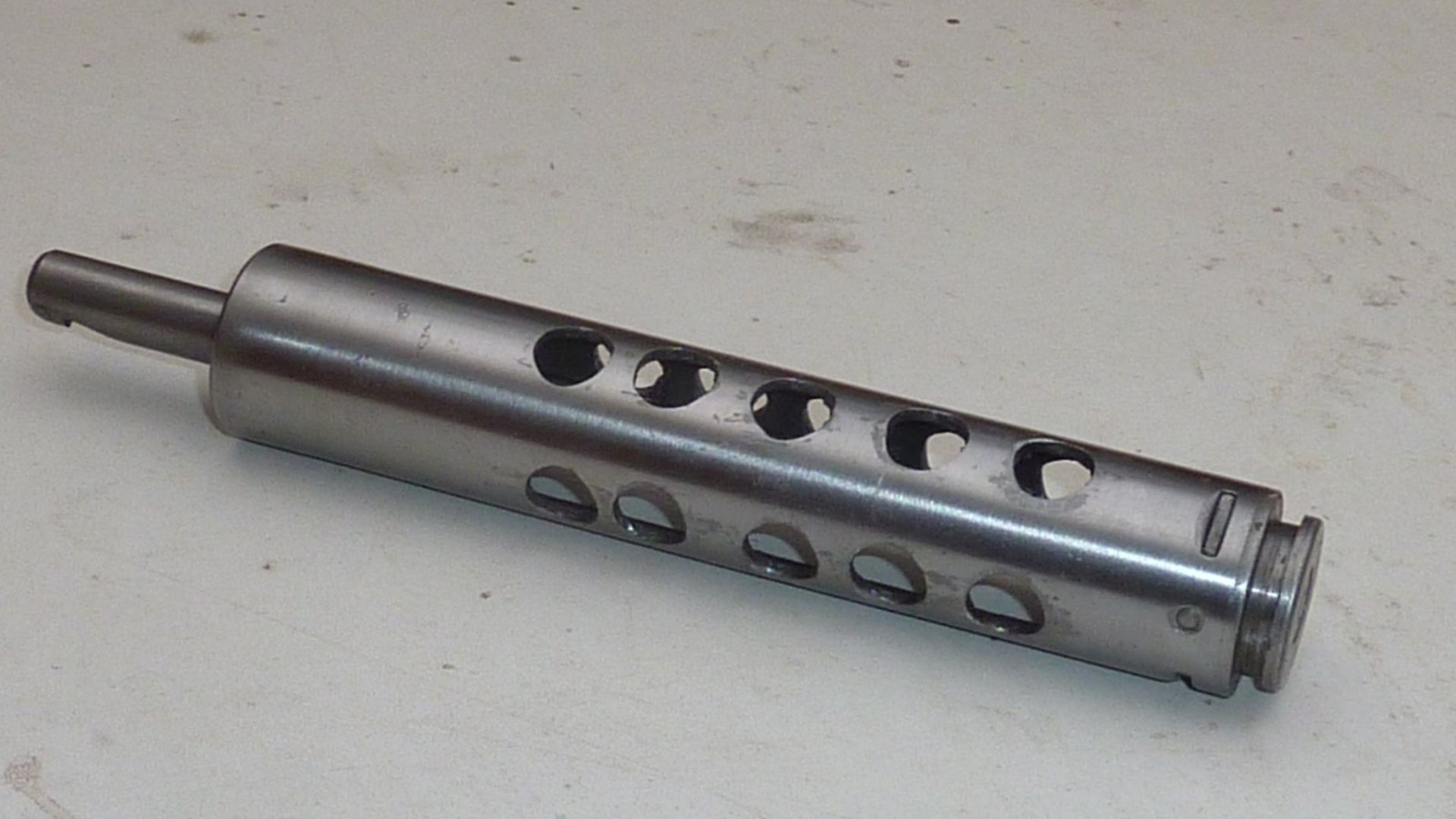A rifle’s weight distribution can have a great effect on both recoil and accuracy, as Jim Tyler explains
Back in 1985, I reluctantly bit the bullet and bought myself a brand new .177 Weihrauch HW77 with the full-length barrel – the HW77K was yet to be launched. My reluctance was partially due to my preference for break-barrel springers, but mainly due to the ‘77 being a big, heavy lump, with what I deemed far too much weight out front at the muzzle for my (then) slender nine stone frame. As it turned out, the rifle’s weight was a blessing in disguise.
Most of my shooting back then was offhand, and I really struggled with the weight of the ‘77 at first, although in time I learned to live with it. Using the rifle probably built up my muscles, as well, and that was when the value of the weight and balance of the HW77 became apparent. My accuracy went to a new level.
 credit: Archant
credit: Archant
Reducing springer recoil
The initial rearward recoil travel is a function of the compression stroke length and the masses of the piston and spring, versus the mass of the rest of the rifle. If you decrease the piston mass, you decrease the recoil travel, and if you increase the rifle’s mass, you also decrease recoil travel. There is a limit to how much you can decrease piston mass because we rely on piston momentum – a function of mass and velocity – to compress the air, but there is no limit, within bounds of reason, on how much we can increase the rifle’s mass to reduce recoil, and that is why most springers used in outdoor competition shooting have their mass increased by lead weights inside the stock, whilst many use a heavier custom stock.
Recoil is not just about movement forward and backward, though, because a springer wants to pivot about its centre of gravity, situated under the cylinder, the muzzle rising during recoil and falling during surge, and the amount of muzzle vertical travel can be directly affected by fitting a muzzle weight. So how does it work?
How inertia effects recoil and muzzle rise
A mass (weight) at rest has a property called ‘inertia’ which describes its reluctance to move, and the heavier it is, the more inertia it has and the more force is needed to get it to move. When the mass is moving, it has ‘momentum’, which is a measure of how much force it will take to bring it to a halt, and for any given velocity, the greater the mass, the greater the momentum,and the greater the force needed to bring it to a halt.
Simply adding weight at the muzzle reduces the distance by which the muzzle rises during the compression stroke, so it is worth doing on that account alone. For many springers, though, there is more benefit than just reducing travel.
When a springer recoils, the barrel starts to rise, but the inertia of the muzzle weight resists the movement to a small degree and can cause the barrel to flex by a tiny amount, governed by the barrel’s length and stiffness, until the barrel has sufficient strain energy to overcome the weight’s inertia, then the weight starts to move. When the barrel comes to a halt, the momentum of the muzzle weight causes it to carry on rising, again by a tiny amount, until the barrel’s strain energy is sufficient to bring it to a halt, and the upshot is that the muzzle rises slightly less with the weight attached, al though there is another, perhaps less obvious, benefit.
In delaying the instant at which the muzzle starts to rise, we delay the timing of the muzzle rise and fall throughout the recoil cycle, and this impacts exactly where the muzzle end of the barrel is pointing and how fast it is travelling, at the point the pellet exits the muzzle.
Now, we all know that not every pellet exits the muzzle at exactly the same velocity, from which it follows that not every pellet leaves the muzzle at exactly the same time, and from that, it follows that the muzzle will not be pointing in exactly the same direction when each pellet exits, which is of course a source of inaccuracy.
 credit: Archant
credit: Archant
Correct weighting to minimise air rifle inaccuracy
The way to minimise that inaccuracy is to time the pellet exit to a point at which the muzzle is stationary, or second best, travelling slowly, and we can do just that by hanging the correct amount of weight at the muzzle.
The pellet usually exits the muzzle early during the surge when the muzzle is falling. Exactly how early depends on the length of the compression stroke – longer giving an earlier pellet exit, and vice versa – the pellet start pressure and of course, the length of the barrel. A muzzle weight delays the start of the muzzle rise, and the start of the muzzle fall, and despite both being of very short time duration, they combine to make a significant difference to the speed of the muzzle fall (which is an acceleration) at pellet exit. The result is better accuracy.
The average PCP recoils, only by a fraction of that of a springer, but they do recoil, and the muzzle wants to rise – usually referred to by PCP owners as ‘muzzle flip’. The recoil is a reaction to the travel of the hammer and it is followed by a surge as the spring force and momentum of the hammer is overcome by air pressure, and the hammer travels back.
With many PCPs, there will be some small degree of barrel movement, so adding a little mass to the muzzle may be beneficial, and not just from the recoil standpoint, but also in modifying muzzle vibrations.
Many years ago, a friend had a short-stroke, gas-ram rifle with pretty vicious recoil that he simply could not get on with in terms of accuracy. To cut a long story short, he ended up mounting a large steel weight – I seem to recall that it weighed one pound or more – on the muzzle, after which he could achieve satisfactory accuracy. That was an extreme case, and the muzzle weight was doing most of its work reducing the fierce recoil acceleration rather than anything as subtle as timing muzzle movement to coincide with pellet exit, so the vast majority of us can use much less weight.
How barrel vibrations affect accuracy
Barrels, both springer and PCP, will vibrate to some degree during the shot cycle, and in the case of PCPs, especially if they have cantilever barrels (supported only at the rear, and often referred to as ‘free floating)). The main (first mode) vibration follows an ellipse pattern with a vertical bias; when the muzzle is at the top, and bottom, of the ellipse, it is travelling very slowly, and when it travels through the ‘at rest’ position, it is travelling most rapidly.
Obviously, it is better if the pellet exits the muzzle at the top or bottom of the ellipse (called ‘anti nodes’) when the muzzle is travelling slowly and reversing direction, than at the ‘at rest’ position (called a ‘node’), when the muzzle is travelling at its fastest, and this can be achieved by hanging the correct weight at the muzzle.
Like a muzzle weight on a springer, one on a PCP with a cantilever barrel both reduces the amount of travel (the amplitude of the vibration), and alters the timing, and while both are desirable, will they make a tangible difference? To be honest, and in the case of, say, tin chicken shooters, many people probably won’t notice any significant difference, but bench rest shooters, who chase absolute precision, almost certainly will.
 credit: Archant
credit: Archant
Trial and error to improve air rifle accuracy
In the best traditions of trial and error engineering, we can attach a mass to the muzzle, test the accuracy, adjust the mass and test again, until we get the best accuracy. It need not cost much, nor be exactly precision engineering, because a strip of lead sheet and a jubilee clip will do nicely. I’d start with perhaps 50 grams and work up from there, adding more lead as you go.
You will need to test accuracy in fairly still air whilst shooting from a bench. Going by experiments I carried out some years ago, group size should shrink as the muzzle weight increases, but at some point they will cease shrinking, and may even start to grow, and that’s obviously the time to stop. Bear in mind that the muzzle weight will place an extra strain on the barrel-latching mechanism of break-barrels, and if the spring is old, it might allow the breech to open minutely at piston bounce, which is precisely the worst time it could happen.
Weighting underlevers for accuracy
Rifles that have a cocking lever under the barrel, and latched near the muzzle, such as the Air Arms TX200, Weihrauch HW97 and Walther LGU, effectively already have extra weight at the muzzle, and could possibly benefit less from an increase in muzzle weight than break-barrel rifles. It is far from unknown, though, for competition shooters to add weight at the muzzles of under levers with cocking aids.
The TX200, of course, has a shrouded barrel, and adding weight to the shroud will reduce the amount by which the barrel rises and falls, although it will not cause the barrel to flex, and so will have less effect on the timing of the barrel position at pellet exit. Again, some competition shooters do add weight, so there must be a tangible benefit.
Barrel angles and flex
Because barrels can flex, the direction in which the muzzle is pointing as the pellet exits might not be the same as the direction in which the rest of the barrel is pointing. The best that most of us can hope to achieve, is to judge when the pellet is exiting near the point at which the muzzle is angled upward most steeply from group size, but I know a learned gentleman (a professor of experimental physics at an American State University, no less) who has taken a huge step forward by measuring the muzzle angle of a springer at the very point of pellet exit. I have had advanced access to an article he has written explaining his experiment, and whilst it involves specialised equipment, which very few (including me) will have access to and be able to replicate, there will be much to draw from the results.
The article has been published, and can be read in the ‘Piston and Spring’ section of the Shooting the Breeze web site.
In conclusion
Provided you can comfortably support it, mass in a rifle is generally good, and mass at the muzzle, even better.